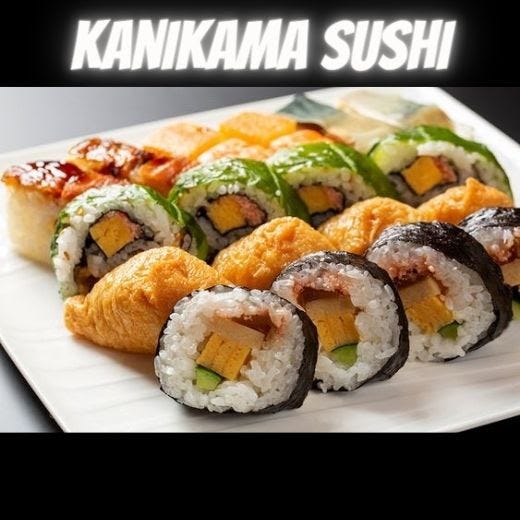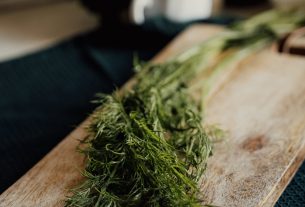When it comes to sushi, the delicate marriage of flavors and textures is what makes it irresistible.
But have you ever wondered about that mysterious ingredient called kani?
In this article, we will unravel the secrets of kani – a tantalizing imitation crab meat that adds a unique twist to your favorite sushi rolls.
Prepare to be amazed as we dive into the depths of this culinary sensation.
what is kani in sushi
Kani in sushi is imitation crab meat made with whitefish, wheat flour, egg whites, salt, seasonings, and crab flavorings.
It is not real crab but is used to mimic the taste and texture of crab.
Kani is commonly used in sushi rolls and other dishes and can be found in various forms such as crab sticks, flakes, chunks, or shredded.
It is a cheaper alternative to real crab but is not gluten-free and lacks some of the nutrients found in real crab.
Key Points:
- Kani in sushi is imitation crab meat made with whitefish, wheat flour, egg whites, salt, seasonings, and crab flavorings.
- It is used in sushi to replicate the taste and texture of real crab.
- Kani can be found in different forms like crab sticks, flakes, chunks, or shredded.
- It is a more affordable option than real crab but contains gluten and lacks some nutrients.
- Kani is commonly used in sushi rolls and other dishes.
- It is not real crab, but rather a crab-flavored alternative.
what is kani in sushi – Watch Video


Pro Tips:
1. Kani is the Japanese term for crab, and often refers to imitation crab meat used in sushi rolls. Despite being called “kani,” the imitation crab meat is actually made from a type of fish called surimi, combined with other ingredients to mimic the taste and texture of crab.
2. In Japanese cuisine, kani is commonly used in sushi rolls such as the California roll or the dynamite roll. These rolls often feature a combination of kani, avocado, cucumber, and sometimes spicy mayonnaise, giving them a unique and flavorful taste.
3. The use of kani in sushi rolls became popular in the United States during the 1970s as a way to introduce sushi to Americans who may have been hesitant to try raw fish. The imitation crab meat provided a familiar taste while still being an affordable alternative to actual crab.
4. Kani can also be found in other Japanese dishes such as kani salad, which is a refreshing combination of shredded kani, mayonnaise, cucumber, and sometimes tobiko (flying fish roe) for added texture and flavor.
5. Fun fact: The word “kani” itself means crab in Japanese, but it can also be interpreted as a play on the word “Kani Kōsen,” which is a famous railway line in Japan. The connection between the railway and crab might not be apparent, but it adds a touch of whimsy to the term “kani” in sushi.
1. What Is Kani In Sushi?
Kani, specifically in sushi, refers to the popular ingredient known as imitation crab meat. In sushi, kani is used as a filling for various sushi rolls, adding a delightful taste and texture to the overall dish. While kani translates to “crab” in Japanese, it is important to note that it does not contain any real crab meat. Instead, it is a specially prepared imitation crab made from a combination of ingredients, primarily Alaskan Pollock.
2. Definition Of Kani In Japanese
Kani is a term in Japanese that translates to “crab”. It refers to a type of food product that bears a striking resemblance to crab in both texture and taste. However, it’s important to note that kani is not actually made from real crab meat. Instead, it is a cleverly crafted imitation crab that aims to replicate the authentic flavor and appearance of crab.
Some key points about kani include:
- Kani is a Japanese term meaning “crab”
- It is not made from real crab meat
- Kani is an imitation crab product
- It is designed to mimic the taste and appearance of crab
A blockquote to highlight a relevant information:
“Kani, though not made from real crab, creatively imitates the flavors and appearance of crab meat.”
3. Ingredients In Kani
The ingredients used to create kani are carefully selected to achieve its unique taste and texture. Along with Alaskan Pollock, wheat flour, egg whites, salt, seasonings, and crab flavorings are used in the preparation process. Additionally, a red food dye is often added to give the imitation crab meat a more authentic appearance.
4. Imitation Crab Meat
Imitation crab meat, commonly referred to as kani in sushi, is a popular choice among seafood enthusiasts. It provides an affordable alternative to real crab while still offering a delicious taste. The process of making imitation crab meat involves grinding and blending the various ingredients to create a cohesive mixture. The result is a seafood-like product that can be used in various culinary applications.
5. Different Names For Kani
Although commonly known as kani, the imitation crab meat used in sushi goes by various names. Some of the alternative names for kani include Kanikama, Surimi, Imitation Crab, Crab Sticks, or Ocean Sticks. These names may vary based on cultural or regional preferences, but they all refer to the same imitation crab meat product.
6. Forms Of Kani
Kani, a popular ingredient, is available in different forms, each with its own culinary advantages. The most common forms of kani include crab sticks, flakes or chunks, and shredded. These variations provide versatility in recipes and allow the imitation crab meat to effortlessly blend into various dishes.
7. Uses Of Kani In Recipes
Kani, known for its distinct flavor and satisfying chewiness, can enhance a variety of dishes. It is commonly used in sushi rolls, imparting a delightful taste. Additionally, kani is a versatile ingredient that can be included in soups, dips, ceviche, salads, and crab cakes. Its ability to add a seafood-like flavor makes it a popular choice for elevating culinary creations.
- Incorporate kani into a wide range of recipes
- Popular in sushi rolls, soups, dips, ceviche, salads, and crab cakes
- Adds a distinct flavor and satisfying chewiness
- Versatile option for adding a touch of seafood-like flavor to dishes.
8. Where To Buy Kani
For those interested in using kani in their recipes, it is readily available at most local grocery stores and Asian markets. These establishments often have a dedicated section for seafood or international ingredients where kani can be found. It is advisable to inquire with store employees or check the frozen seafood section if kani is not immediately visible.
9. Nutritional Information Of Kani
Kani is a relatively healthy food option, low in fat and calories, while still being a good source of protein, vitamins, and minerals. However, it is important to note that when compared to real crab meat, kani falls short in terms of protein content, omega-3 fats, and other essential nutrients. Additionally, individuals with gluten sensitivities should take note that kani is not gluten-free due to the inclusion of wheat flour as a filler.
10. Kani As A Cheaper Alternative To Real Crab
One of the key advantages of using kani in recipes is its affordability. Real crab can be quite expensive, making it less accessible to those on a limited budget. Kani offers a cost-effective alternative while still providing a pleasant seafood flavor. It allows individuals to enjoy the taste of crab at a fraction of the price, making it an appealing option for those looking to explore new culinary horizons without breaking the bank.
Kani is the imitation crab meat commonly used in sushi and other recipes. Although it does not contain any actual crab meat, it offers a delicious taste and enjoyable texture. Whether used in sushi rolls, soups, salads, or other dishes, kani provides a low-fat and low-calorie option that can be easily found in local grocery stores or Asian markets. Its affordability and versatility make it an attractive choice for those seeking a flavorful substitute for real crab.

You may need to know these questions about what is kani in sushi
Is Kani sushi real crab?
Yes, Kani sushi usually consists of imitation crab meat made from a white fish blended with starch to replicate the texture and taste of real crab. This clever technique allows for a more affordable and versatile ingredient while still providing the shape and flavor of authentic crab meat. So, when indulging in Kani sushi, you get to enjoy the delightful combination of the seafood-like flavor of Kani with the traditional elements of sushi.
Is Kani cooked in sushi?
Kani sushi typically uses cooked crab, whether it is the real crab or imitation crab. The crab meat is usually prepared by boiling or steaming it, ensuring that it is fully cooked before being served as sushi. This ensures that the crab meat is safe to eat and adds a delicious and tender element to the sushi rolls.
Is Kani the same as imitation crab?
While Kani and imitation crab share similar characteristics, they are not the same. Kani, a Japanese term meaning “crab,” is a seafood product that aims to replicate the taste and texture of real crab, but does not actually contain any crab meat. On the other hand, imitation crab, also known as Kanikama, Surimi, or crab sticks, refers to the processed seafood made from ground fish, commonly pollock, that is shaped and colored to resemble crab legs or chunks. Despite the confusion surrounding their names, Kani and imitation crab are two distinct products with their own unique composition and ingredients.
What type of crab is Kani?
Kani, also known as kanikama or crab stick, is not actually made from crab but from white fish such as pollock or cod. Invented in the mid-1970s, kani was developed as a new style of kamaboko, imitating the taste and texture of crab meat. Despite its name, kani is a delicious seafood alternative that offers a similar experience to enjoying crab salad.
Reference source
https://www.wellseasonedstudio.com/spicy-kani-salad-recipe/
https://kaesushi.com/kani-sushi/
https://aubreyskitchen.com/spicy-kani-roll-spicy-crab-roll/
https://foodieandwine.com/what-is-kani/



